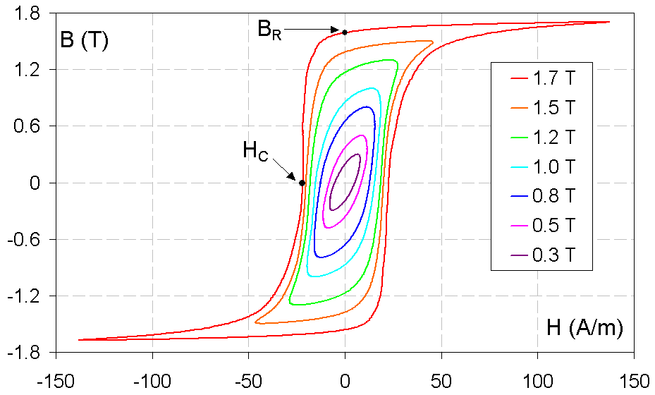
-
Coercivity
In electrical engineering and materials science, the coercivity, also called the magnetic coercivity, coercive field or coercive force, is a measure of the ability of a ferromagnetic material to withstand an external magnetic field without becoming demagnetized. An analogous property, electric coercivity, is the ability of a ferroelectric material to withstand an external electric field without becoming depolarized.
For ferromagnetic material the coercivity is the intensity of the applied magnetic field required to reduce the magnetization of that material to zero after the magnetization of the sample has been driven to saturation. Thus coercivity measures the resistance of a ferromagnetic material to becoming demagnetized. Coercivity is usually measured in oersted or ampere/meter units and is denoted HC. It can be measured using a B-H analyzer or magnetometer.
Ferromagnetic materials with high coercivity are called magnetically hard materials, and are used to make permanent magnets. Materials with low coercivity are said to be magnetically soft. The latter are used in transformer and inductor cores, recording heads, microwave devices, and magnetic shielding.
-
Coercivity (noun)
The quality of being coercive
-
Coercivity (noun)
The intensity of the magnetic field which must be applied in order to reduce the ferromagnetic material to zero after the magnetization of the sample has been driven to saturation
-
Retentivity (noun)
the ability to retain, potential for retention
“retentiveness”
-
Retentivity (noun)
the capacity to retain magnetism after the magnetizing action
